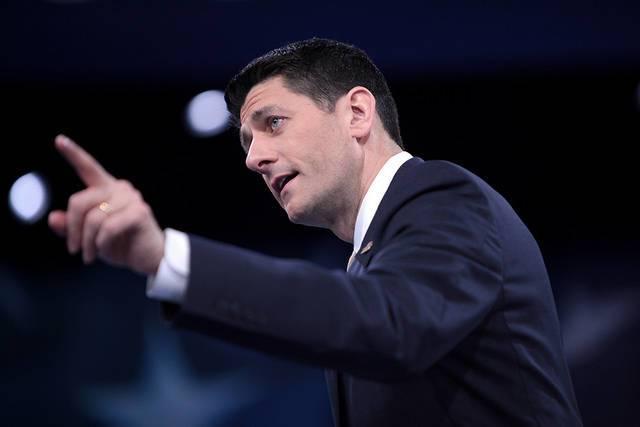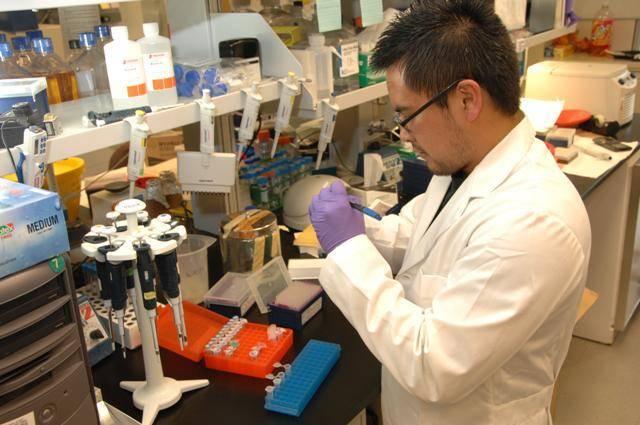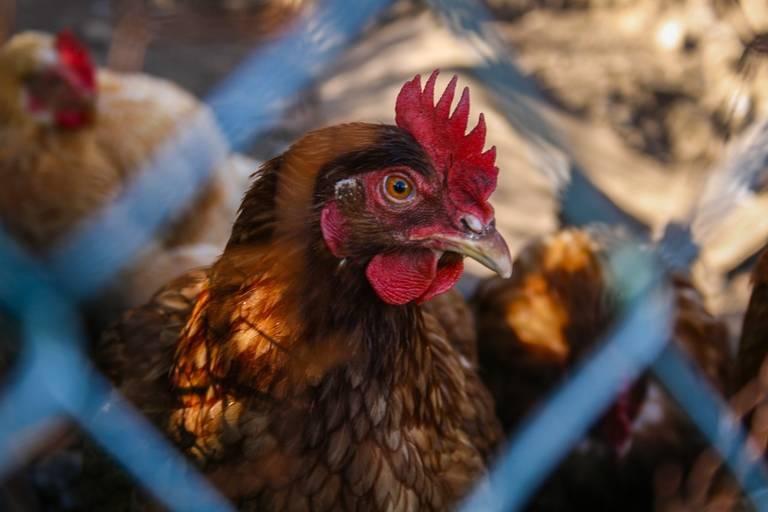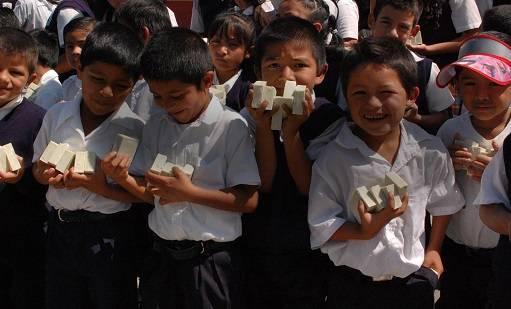Seize the Opportunity to Go Deforestation-Free


By Carlos Saviani
Protecting forests isn’t just critical for the health of our planet; it’s also smart business. According to a recent report from the World Economic Forum and Tropical Forest Alliance 2020, deforestation-free supply chains for beef, soy, palm oil, and forestry products represent an annual investment opportunity worth $200 billion.
This shift in business and financial strategy could not come sooner for the world’s most threatened forests, especially Latin America’s Amazon rainforest, Cerrado savannah, and Chaco woodlands. Between 2000 and 2011, they accounted for one-third of the world’s tropical deforestation, even though they occupied only 25 percent of the tropical forest footprint.
For the past few decades, efforts to eliminate deforestation in the Amazon have significantly slowed deforestation, though in recent years, the pace has started to pick back up. Unfortunately, as protections took hold in the rainforest, agriculture expanded into neighboring forests such as the Cerrado and Chaco, driven primarily by rising demand for beef and soy.
The benefits of protecting forests run the gamut from the mystical to the monetary.
Economically, deforestation-free production and sourcing delivers immediate benefits for companies that can meet growing demand from consumers who want to buy products they can feel good about.
When companies couple deforestation-free policies with robust traceability and monitoring programs, it can significantly mitigate the legal, financial, and reputational risks that illegal products—such as those that are planted on illegally deforested land or harvested by illegally bonded workers—are hidden in their supply chain.
Increasingly, deforestation-free producers also can forge preferential supplier agreements and longer term contracts. These tools can create a virtuous cycle, giving farmers the assurance they need to invest confidently in more sustainable practices.
The risks of inaction are too great to ignore. Locally, the destruction of forests can prolong droughts, intensify flooding, and degrade soil. Indeed, the Amazon has suffered several once-in-a-century droughts and floods in just the last 15 years or so. Globally, deforestation contributes to the build-up of heat-trapping gases in our atmosphere. Taken together, these forces can depress agricultural yields, disrupt supply chains and trade, and even destabilize social and political structures. Deforestation-free production and sourcing mitigates these impacts.
It will take the entire value chain working together to protect these forests. Consumers can demand deforestation-free products from the grocery stores and restaurants they patronize. Those retail operations, in turn, can demand those products of their suppliers. Traders, input providers, and financial institutions can provide the tools and support that farmers need to shift production practices.
More than 400 companies have made more than 700 pledges to protect forests and forest communities, though a minority of them are engaged in beef and soy production. And moving from commitment to achievement is challenging. Numerous joint initiatives and individual efforts create confusion, as do the hundreds of different definitions for “forest”.
World Wildlife Fund is working with the National Wildlife Federation, The Nature Conservancy, and the Gordon and Betty Moore Foundation to help companies fulfill their commitments to protect forests, focusing on the beef and soy supply chains sourcing from the Amazon and Cerrado of Brazil, and the Chaco of Argentina and Paraguay. Together, we’re harmonizing definitions and policies to facilitate an industry-wide movement, creating monitoring and mapping tools to track companies’ progress, and collaborating with the financial sector to increase capital flows and reduce risks of implementing deforestation-free policies.
Image credit: Flickr/Christoph Diewald
Carlos Saviani is Vice President of Sustainable Food for the World Wildlife Fund (WWF).
Renewi opens trading at London Stock Exchange


Unmasking The Revised Republican Health Care Plan


Whether you like Rep. Nancy Pelosi (D-Calif.) or not, she got the numbers right on the American Health Care Plan (AHCA) when she stated: "[Republicans] have no idea how to explain stealing $600 billion from working families’ health care to give more tax breaks to the richest people in our country."
The original AHCA reduced taxes on the 1 percent by reducing health care for lower earners. The political reality of such a plan explains why House Speaker Paul Ryan (R-Wis.) is now offering a “revised” plan.
But this new plan looks to be even worse for those who are not rich and not over 66 years of age.
AHCA reduces healthcare costs by hurting kids, students and the disabled
Critics say what's wrong with the Affordable Care Act (ACA, also known as Obamacare) is that it's not all that affordable. It funded health care for the poor by taxing the very rich.
But the Republican AHCA does not reduce healthcare costs. It eliminates the Obamacare tax on the richest at the expense of eliminating or reducing health care for the poor.
A key question is: Who are these poor people that will face reduced or eliminated health care to enrich the wealthy?
A third are children, amounting to almost 16 million kids!
A tenth, 5 million people, are disabled.
Students make up 7 percent of those affected, or 3.5 million people.
The net impact of the Republican ACHA is that millions of kids, students and the disabled get less health care while the most wealthy receive an individual tax reduction of $165,000 each.
Paul Ryan is buying votes by hurting the poor even more while enriching the wealthy
Rep. Paul Ryan proposed four reforms to the ACHA that appear designed to shore up Republican support, as reported by Jeff Stein of Vox:
- A “reserve” fund for older Americans. The original AHCA formula for calculating health insurance represented as much as a $10,000 per year increase in premiums for older Americans who are not yet old enough to receive Medicare. The new AHCA sets up a $75 billion fund to provide more tax credits for this group. But the catch is that the new AHCA language does not specifically say how the $75 billion will be used to help older Americans.
- Reduced Medicaid funding that further hurts the poor. As if the original AHCA was not devastating enough in terms of health care for the poor, the new plan further reduces healthcare costs through cuts to Medicaid.
- Accelerating tax reductions for the rich. If you ever need evidence of the power campaign contributions from the rich hold to influence legislation, then this is it. The new AHCA accelerates the reduction of taxes for the rich.
- Special deal for New York’s GOP delegation. This one is just good old fashioned vote-buying. The New York GOP delegation wants to stop their Democratic governor’s Medicaid plans. Ryan is giving them what they want in exchange for their votes for the AHCA.
Four steps to end our political nightmare over health care
Whether it was Obamacare or ACHA, our political efforts can best be described as a shell game. Politicians are not succeeding in reducing healthcare costs. Instead they are shifting healthcare costs and taxes between American demographic groups.
Perhaps instead of Ryan's suggestions, politicians should pursue these four steps to achieve reduced healthcare costs:
- Move toward an individual payer insurance system. This type of insurance system is how we buy home, car and life insurance. It is sold on a national basis by intensely competitive companies. It is price-regulated by state commissions. Health insurance is a national service that would benefit from lower costs and improved service if it was sold and serviced just like the rest of the insurance we buy.
- Reforming drug development and sales. The current system enables drug companies to charge Americans high prices to fund drug research while charging the rest of the world competitive prices. This system needs to be reformed to insure continued drug research while also providing Americans with access to the same lower drug prices the rest of the world receives.
- Treat unhealthy food and beverages like tobacco. Our health insurance cost crisis is a weight crisis. What we eat and drink is causing an obesity and diabetes epidemic that is bankrupting our health insurance system. As a nation, we have successfully addressed the cost impacts of tobacco use by taxing it and restricting youth access. It is past time we make a national commitment to doing something similar to reduce our consumption of sugar, fats, salt and chemical additives.
- Recognize the cost of death. Dying is expensive. Approximately a third of Medicare costs are incurred during the last six months of life. Oregon and Washington states have gone through the difficult process of passing end-of-life legislation that empowers people to live and die as they wish. As contentious as this process will be on a national level, it is a dialogue we can no longer afford to avoid.
Trump's Science Budget Slash Will Impact Business, Too


American businesses are still trying to figure out how President Donald Trump's proposed budget could affect their operations. And while it seems increasingly unlikely that Congress will pass Trump's budget 'wish list' as is, the administration’s $1.1 trillion package -- which would beef up defense programs, slash funding for other agencies and demand “significant reorganization” of key governmental services -- could have dramatic impact on American small businesses.
The Labor Department, which enforces occupational safety and fair employment laws (as well as provides federal funding for unemployment benefits), would lose just over 20 percent of its staff and operational funding. Services like the Senior Community Service Employment Program and the Office of Disability Employment Policy, which facilitate employment opportunities and protections for workers, would be eliminated.
And the Department of Agriculture, whose programs play an indispensable role in ensuring that the towns and rural counties that make up America’s fertile breadbasket have adequate funding infrastructure, would see almost a third of its budget stripped. Key programs that connect mortgage lenders and potential homebuyers would also be cut. Predominantly rural states like Alaska would have less state and federal assistance to offer in commercially poor areas.
Science cuts reach overseas
But none of these examples are on par with the impact of Trump’s fiscal vision could have on science and technology.
Federally-funded HIV research, which often receives a boost from overseas collaboration through the National Institutes of Health’s Fogarty International Center, would face virtual elimination. The proposed budget slashes $69 million from the NIH, removing opportunities for research grants to overseas agencies. President Trump has made it clear that he is not a big proponent of funding overseas agencies. In this case, critics say the budget plan overlooks the fact that American research gains are often the result of international partnerships.
And HIV treatment is far from the only type of research the Fogarty Center promotes. Climate change, maternal and child health, and opportunistic diseases like the Zika virus have at one time or another benefited from programs and partnerships that are now targeted for elimination.
Trump's budget would also call for a “major reorganization” of the NIH. The resulting 18 percent cut in its funding would weaken support for cancer research and provide less funding for other types of investigation as well, say scientists. Public-private partnerships that often support expensive research efforts would be stunted in the process.
Under Trump’s proposed reorganization, funds for the Centers for Disease Control and Prevention (CDC) would be reconfigured into a $500 million block grant for states to use as they see fit. Again, the suggested policy ignores the fact that global research is a large part of keeping epidemics at bay and that the CDC’s research successes can be largely attributed to the fact that it is coordinated as a federal program, rather than pursuing disparate interests.
Slimmer science budgets could impact education and medical research
And, as is often the case in funding, cutting back on science has impact in other industries as well, such as the higher-education programs that rely on strategic funding from the U.S. government. Cuts facing the National Institutes of Health would impact graduate and undergraduate programs, resulting in fewer candidates and fewer scientists to fill posts deemed essential in coming years.
But where the budget seriously misses the mark, writes Bryan Walsh, the former international editor of Time, is with respect to the universal flu vaccine – something scientists have been working toward for decades and which seems particularly apt given the latest round of bird flu that hit China the same week Trump released his budget.
"[Pandemic] influenza represents a threat to American security as great as any from terrorism and armed conflict,” Walsh points out. “We would be foolish not to spend what we need to protect ourselves.”
But the administration’s oversight may not be that coincidental. As the Associated Press highlighted last week, it takes today’s funding to create tomorrow’s cures. It also takes concerted, sustained research (and sustained funding) to discover those cures and vaccines, something that can’t risk interruption from year to year.
In comparison, Trump’s budget calls for calculated decisions based on today’s needs and challenges, rather than on those tomorrow’s generations will face. It overlooks the fact that developing the battery of medications that are now on the shelf for HIV patients not only took decades of pharmaceutical research, but decades of medical research as well. The roughly $15 billion the NIH commits to cancer, heart, HIV/AIDS and Alzheimer's research is critical to ensure ongoing research.
And time always has a dollar figure attached to it, the Alzheimer's Association reminds us: Care costs for the country's sixth-leading cause of death is estimated to be $259 billion in 2017. In 2050 those costs could hit $1 trillion, with increased demands on family caregivers.
Risk to international collaboration
Trump's proposed budget also assumes that private funding options will grow if governmental options recede or are cut. On the contrary, it is government funding that often makes it possible for privately-supported research to continue. And as in the case of recent the Zika and Ebola outbreaks, it was the coordination between U.S. research agencies and those overseas that made efforts successful.
The Trump administration’s proposed cuts would also make deep incisions in the funding for the United Nations and the World Health Organization. The World Bank, which serves at critical times as a financial tool for fighting outbreaks like Ebola and Zika, would also see funding cuts.
Ultimately, Congress has the final say when it comes to the nation’s budget. And more back-and-forth is sure to come as all sides weigh in on the topic. Trump promised a more expanded and detailed budget in coming months.
Trump budget: Dead on arrival?
And there are some who feel Trump's budget is just too extreme to make it through Congress. The administration's proposal would cut back on biomedical research, something that has received a fair amount of support on Capitol Hill in recent years. The pushback from NGOs and communities at risk from those cuts may force Congress to rewrite much of what Trump propose -- or reject it outright.
Before the budget could be considered for passage, it would have to meet the requirements of the Budget Control Act. And it's quite possible Trump's budget wouldn't pass the muster, says defense expert Richard Aboulafia. The BCA sets sequestration limits, which in plain terms means that, ironically, any funding over a certain point for defense would need 60 or more votes in Congress -- something that Trump's "hard defense" budget isn't likely to see, Aboulafia predicts.
For now, though, Trump may have accomplished a set task with his draft budget: He told the defense community (and his supporters) that he has the nation's defense in mind. And just as importantly, he put the science community on notice that this administration's priorities and vision for the future will be different.
Public Domain Images: Wikimedia/National Institutes of Health; Wikimedia/Diane A. Reid/National Cancer Institute
Kraft Heinz Releases New Palm Oil Policy, But Some NGOs Are Skeptical


On Tuesday, the $26 billion food giant Kraft Heinz announced a commitment to create a more sustainable supply chain -- in part by revamping its palm oil policy. As part of its vision dubbed Grow a Better World, the company pledged to source palm oil in an “ethical, transparent and sustainable matter,” saying 100 percent of the ingredient would be certified by the Roundtable on Sustainable Palm Oil (RSPO).
Kraft Heinz, which includes brands such as Planters, Oscar Meyer, Velveeta and Jell-O, also said it would work with its palm oil suppliers to improve traceability, as well as stamp out child labor within its supply chain.
While the company claims to use a small amount of palm oil across its global operations, it said it shares the food industry’s “collective concern” about the impact the ingredient has on the environment and human rights.
“We are committed to achieving a sustainable and traceable palm oil supply chain as one aspect of the aggressive CSR goals and initiatives we announced today," a Kraft Heinz spokesperson told TriplePundit in an email. Other corporate social responsibility (CSR) initiatives announced on Tuesday include animal welfare commitments and a pledge to donate 1 billion meals to those in need. The company plans to report on its progress "through bi-annual CSR reporting,” the spokesperson said.
This shift at Kraft Heinz comes as NGOs have become even vocal about the effects palm oil exacts on communities worldwide, particularly in the top two producers, Indonesia and Malaysia. As the industry seeks new regions in which to cultivate this product, including Africa, organizations such as the Rainforest Action Network (RAN) and Mighty Earth criticized the sector for an overall lack of transparency, disregard for human rights and continued deforestation. To its credit, the RSPO (of which Kraft Heinz is a member) has been successful in increasing global supplies of sustainable palm oil.
Critics, however, are quick to point out environmental degradation in remote areas of Indonesia as an example of how the industry still has a lot of work ahead. Organizations such as WWF are quick to remind consumers that at least half of the world’s food and personal care products contain palm oil as an ingredient – a statistic that demonstrates the potential this industry has to either become more destructive or emerge as a pillar of sustainable development worldwide.
To some observers, Kraft Heinz’s pledge is a step in the right direction. WWF, for example, gave the company’s palm oil efforts an overall thumbs-up in its most recent palm oil scorecard. Nevertheless, environmental organizations and activist investor groups want to see more action.
Kraft Heinz has made it clear that such actions will unfold on its terms. Domini Impact Investments and Calvert Investment Management announced a shareholder proposal directed toward Kraft Heinz shareholders earlier this month. The measure urged shareholders to require the company to assess its impact on human rights and deforestation -- and report on those findings publicly.
Kraft Heinz’s board urged the owners of its stock to vote against the measure at the company’s annual shareholder meeting next month. It also recommended shareholders abandon two other proposals focused on sustainability.
In addition, the United Kingdom-based publication Ethical Consumer claims it sent Kraft Heinz a survey about its palm oil sourcing policies last month, but the company never responded. Those comments echo the concern of other activists who have been dubious about the company’s stance on transparency since Kraft Foods and Heinz announced their merger in 2015.
So far, NGOs have at best offered a tempered response to the company’s new palm oil policy. RAN welcomed Kraft Heinz’s new stance. But the NGO says consumers must be aware that their favorite brands may still contain what it describes as “conflict palm oil.” RAN has characterized Kraft Heinz as a palm oil “laggard” in the past, and is urging the company to publish an implementation plan that will inform stakeholders about the progress it is making to achieve its goals.
Describing the announcement as a “first step,” RAN’s Gemma Tillack said she viewed these commitments to protect forests, peatlands and local communities as a positive.
“It is disappointing, however, that the policy lacks a deadline for ... implementation,” she told 3p in an email. “Customers will continue to be at risk of buying products that contain conflict palm oil for years to come.”
Mighty Earth, a Washington D.C.-based NGO that has amplified its objections to how the world’s largest palm oil players have conducted themselves over the past year, was even less conciliatory in assessing Kraft Heinz’s announcement. When 3p asked Mighty for comment, Campaigns Director Deborah Lapidus replied:
“Kraft Heinz's new palm oil policy falls far short of giving customers the satisfaction of knowing they are buying macaroni and cheese or ketchup that was produced without deforestation or human rights abuse. Instead of a clear plan for sourcing 100 percent deforestation-free and exploitation-free palm oil, like its competitors Kellogg’s and Nestle did years ago, Kraft Heinz is taking a baby step of buying palm oil certified by the Roundtable on Sustainable Palm Oil.”
Lapidus also pointed out that Kraft Heinz is partly owned by 3G Capital, a Brazilian investment firm that is also owns a stake in Burger King, a company Mighty has accused of driving deforestation in South America. Burger King, like Kraft Heinz, has been criticized in the past for its lack of transparency in discussing its palm oil sourcing. Though that company did make what insiders call a significant step in its animal welfare policies this week.
Among all of this, one question remains: If Kraft Heinz -- the world’s fifth largest food company -- can show demonstrable progress, its peers follow suit? And if more firms commit to sustainable palm oil, can this industry actually have a remediating effect on the planet, or will the world’s hunger for this ingredient sow even more deforestation and misery in local communities?
Image credit: CIFOR/Flickr
4 Clean Technology Trends to Watch in 2017


At a first glance, it seems almost three years of low fossil fuel prices and a regime change in the U.S. would stunt the growth of sustainable and clean-technology sectors here and abroad. But solar and wind technologies keep scaling and dropping in price, and energy-efficiency technologies remain in demand. The challenges of a growing population, and less space in which to live and grow food, will spark more innovations in water and agriculture technology.
To that end, TriplePundit recently spoke with Roy Wiesner, CEO of Hutchison-Kinrot, a global seed investor in clean-technology startups.
Wiesner has a birds-eye view of the sector. His role requires him to work closely with his firm’s portfolio of companies during all stages of research and development, strategic planning and, of course, financing. He has lived and worked a short drive north of Tel Aviv, Israel, for several years. And this base immersed him in what he called the “startup nation,” where the confluence of national security, food, energy and water challenges made this rapidly growing nation of 8 million people home to a sector rivaled only by the emerging companies of Silicon Valley.
He outlined four broad trends to watch over the next year. Sprinkled in the discussion are some examples of firms that are capitalizing on the world’s need for products that have a minimal or even a remediating impact on the environment. And while this is by no means an endorsement for investments in these companies, the market shifts are surely interesting.
Circular economy
“We certainly see a lot of interest in everything around the circular economy, from carbon capture to turning organic waste into bioplastic," Wiesner told us. “And this ‘trash-to-treasure’ is a trend that we see growing, as investors and corporates are interested making firms’ operations more efficient.”
On the bioplastics front, one Israeli company that stands out is 3PLW. The firm says it has developed an anaerobic digestion process that can shorten the process of churning biomass from municipal waste into a material ready for biochemical production. It claims its process takes 72 hours. That is a huge drop from the typical range of time, which varies from 10 to 40 days.
Over on this side of the pond, a bevy of notable startups and social enterprises are finding creative ways to cope with plastic and other forms of waste. Looptworks, for example, collaborated with airliners such as Southwest and Alaska Airlines to repurpose seat upholstery into bags and apparel. The Pittsburgh-based social enterprise Thread has found success in processing bottles found on the streets in Haiti into fabric purchased by the likes of Timberland.
Then there is the pesky challenge of turning carbon into something useful. LanzaTech, for example, can harness emissions from industries such as steel manufacturing. The company’s technology then combines these emissions with microbes in order to produce chemicals or fuels such as ethanol. One bio-economy publication named LanzaTech as the top company among 50 other 'hottest startups to watch' in 2017.
Agriculture, aquaculture and food technology
“How are we going to feed the world?” Wiesner asked us rhetorically. “There is one side: improving yields with technology, as in water sensors. But he said "alternative foods, especially with sources of protein other than meat" also play a role.
Israel by many accounts has become the world’s water superpower with innovations in desalination, as well as the rise of drip-irrigation firms such as Netafim.
The country’s innovation culture also promises to change industries such as aquaculture, which already provides over half of the world’s seafood – a figure the World Bank estimates will soar to two-thirds by 2030. (For those unfamiliar with aquaculture, it's basically fish farming, which can happen in contained ponds or offshore net pens.)
The aquaculture sector scored a huge boost in startup funding in 2016 compared to the year before, so as fish starts to overtake meat as the world’s most consumed protein, watch for aquaculture to enjoy a steady boom.
But this industry consumes significant amounts of energy, mostly due to the aeration necessary to ensure enough oxygen to keep fish and other sea creatures healthy. The problem is that these aerators are heavy, which also poses a risk for electrocution of fish. Waterator, an Israeli startup, has developed a system that relies on water pressure rather than electricity – and this pedal system is made of plastic and free of electrical components, which makes it easier and safer to maintain.
Then there is the challenge of sourcing enough food to supply these aquaculture ponds without creating more of an impact on the world’s fisheries or relying on materials such as soy. Watch for several companies to capitalize on this trend in the coming year.
In Belgium, TomAlgae strives to manufacture microalgae-based feed that is both cost-effective and rich in nutrition. TerraVia, based in the San Francisco Bay Area, morphed from an algae-based biofuel technology company into one that aims to supply fish farms with feed while minimizing any impact on land and water supplies.
The water-energy nexus
As more people move into urban areas, and sources of fresh water become even more strained, entrepreneurs will find more opportunities as a growing planet is forced to do more with less. Wiesner said the demand for desalination, smart water networks and wastewater treatment will drive even more innovation.
On that last point, wastewater treatment can kill two birds with one stone: Recycling water shows potential for inspiring renewable energy technologies as well.
Boston-based Cambrian Innovation is one example of how wastewater treatment can help municipalities cope with the need for more energy. The company’s line of EcoVolt reactors treat wastewater with electrically-charged microbes. The result, says the company, is a far more cost-effective option to create a new source of clean water while producing biogas that can generate up to 200 kilowatts of power.
Then there is the problem of treating contaminated water, which can result in even more headaches and costs. WellToDo, a project affiliated with the BIRD Foundation (a 40-year-old Israeli-U.S. joint research and development initiative), says it can treat contaminants without creating byproducts such as brine. The company’s technology uses catalytic modules to turn nitrates into nitrogen gas, eliminating waste that would otherwise require an expensive storage option.
Internet of Things 4.0
Finally, Wiesner noted that companies’ need to monitor, measure and maintain everything within their operations has paved the way for the rise of the Internet of Things (IOT).
And those technologies are driving “smart homes,” paving the way for Israeli startups like Etugo Technologies. “IOT 4.0 is not just not about how to gather data, but gain results,” Wiesner said, referring to the next generation of the IoT and the proliferation of even more IoT companies. “Challenges, such as predicted maintenance, are among the things that companies want to see so they know what is going on in real time in order to optimize their operations.”
One startup in India, Precimetrix Technologies, is trying to capitalize on manufacturers’ desire to monitor all of their processes remotely in order to improve efficiency. Based in the western city of Pune, Precimetrix says it can offer industries as diverse as pharmaceuticals, automakers, and cable manufacturers software solutions that can gauge a firm’s fleets and plant operations, while simultaneously improving relationships between a manufacturer and its customer base.
ITiZZiMO, which has offices in the U.S. and Germany, says it can manage, integrate and share information from any device, including a smart watch, and have all of that company’s data digitally managed on one central platform. Information gleaned from machines and sensors can be leveraged to help workflows progress more smoothly.
ITiZZiMO offers customers a wide range of apps beneficial to employees, such as programs that break down tasks into easily followed steps on next-gen wearable devices. The company says its technology is not about automation and eliminating human jobs. In fact, it insists it can boost efficiency as it allows for benefits such as live video and audio streaming, permitting employees to learn from each other even more seamlessly.
And an industrial cleaning company in Austria can conserve water, while utilities’ smart meters can become even smarter.
These are just some of the stories unfolding from the world's top clean technology companies. We'll keep our eyes out for what's next.
Image credit: Leon Kaye
Editor’s note: Vibe Israel funded Leon Kaye’s December 2016 trip to Israel. Neither the author nor TriplePundit were required to write about the experience.
Burger King, Tim Hortons Announce New Animal Welfare Commitments


This week Restaurant Brands International, the parent company of Burger King and Tim Hortons, announced new animal welfare commitments for 2025. The policy extend to Burger King and Tim Hortons locations in the U.S., Canada, Mexico, and Latin America.
The commitments cover a wide range of animal welfare issues, including cage-free chicken and sow housing, as well as the responsible use of antibiotics.
The animal welfare group Mercy For Animals worked with RBI for six months to make these commitments. Burger King is the fourth largest quick-serve restaurant chain in the U.S. with over 15,000 locations, and Tim Hortons is the largest quick-service restaurant chain in Canada -- so this is a big buy-in.
The commitments “should inspire other leading quick-serve restaurant chains to implement identical commonsense welfare improvements,” Brent Cox, vice president of corporate outreach with Mercy For Animals, said in a statement. “It is imperative that other quick-service restaurants acknowledge that animal cruelty has no place in a civilized society.”
“We are pleased to support RBI in this transition,” added Priscilla Ma, U.S. executive director of World Animal Protection, in a statement. “The commitment announced by Burger King and Tim Hortons will be highly impactful for chickens in North America. This move sends a powerful signal to food businesses around the world that meaningful change for chickens is not only possible but vital.”
Bye-bye to cruel confinement
Many North American farm animals are confined in small spaces throughout their lives. Hen-laying eggs are forced to live in battery cages the size of one sheet of letter-sized paper. They are in such small quarters that they cannot engage in normal chicken behavior such as dusting or perching.A typical egg farm in the U.S. houses thousands of battery cages that are lined up in multiple rows and stacked three to five tiers high, according to the Humane Society of the U.S. (HSUS).
RBI set 2025 as the year Burger King and Tim Hortons will transition to 100 percent cage-free eggs in the U.S., Canada, Mexico, and Latin America.
Like chickens, pregnant sows are typically confined to gestation crates that are so small they cannot even turn around. The crates are around two feet wide and seven feet long.
Being confined in such small spaces affects the health and welfare of breeding sows, according to HSUS. They can end up with reduced muscle weight and bone strength, making even simple movements difficult. Such close quarters also increase the chances the sow will slip and hurt herself.
The sows confined in gestation crates tend to be less fit than ones that are not confined. They can also get injuries and feel sore from rubbing against the bars of the crates.
RBI will source pork exclusively from suppliers that do not use gestation crates by 2022 in North America and by 2025 in Latin America.
Making the broiler chicken supply chain more humane
About 70 percent of chickens raised for meat around the world are in intensive farming systems. Chickens raised in intensive farming systems are bred to reach slaughter weight in about six weeks, which is less than the half time it traditionally takes.The chickens often spend their short lives in overcrowded sheds and have no access to the outdoors, according to Compassion in World Farming (CIWF). Broiler sheds are usually bare and only have water and food. They lack natural light and litter on the floor to absorb droppings, which is often not cleaned until the chickens are taken to slaughter. Chickens can develop burns on their legs and feet, called hock burns, from contact with litter.
RBI committed to adopt the Global Animal Partnership (GAP) standards, which includes transitioning to breeds that are determined to have better welfare outcomes, providing more space by reducing maximum stocking density, enhancing living environments, and using a multi-step controlled-atmosphere stunning system.
A more responsible use of antibiotics
“Antibiotic use plays a major role in the emerging public health crisis of antibiotic resistance,” Ohio State University researchers concluded in a 2012 study on antibiotic use among farm animals. The majority of antibiotic use “occurs in agricultural settings,” they determined.The researchers found that the use of antibiotics among animals raised for food is “widespread” and the density of “modern intensively managed livestock operations” contributes to the use of them among farm animals.
Presently, RBI requires its suppliers to buy from farmers that use antibiotics in what the company deems a “judicious and responsible manner when treatment is necessary.” It aims to eliminate the use of antibiotics that the World Health Organization (WHO) has labeled “critically important” to human medicine from its chicken supply chain by 2017 in the U.S. and 2018 in Canada. It is especially vital to reduce human overexposure to these antibiotics, as too much exposure can impede their effectiveness in fighting infection.
Image credit: Pexels
For Hilton, Corporate Responsibility Means Customer Trust


With nearly 4,900 properties spanning 104 countries and territories, Hilton is one of the largest and fastest-growing hospitality companies in the world. The company has also launched numerous corporate responsibility initiatives that win trust and consumer confidence – benefiting employees, the environment and corporate earnings in the process. The hotelier demonstrates that sustainability improvements can result in both environmental victories and cost savings.
"Hilton has saved an estimated $751 million from water, waste, and energy-efficiency initiatives which have also resulted in a reduction of our carbon emissions by 23 percent in seven years," said Judy Pines, director of sustainability and responsible sourcing at Hilton. "We use a corporate responsibility performance management platform called LightStay to measure environmental and operational performance metrics."
The platform tracks ongoing progress, shares best practices among hotels, and highlights areas where properties can reduce their environmental impact through water-, waste- and energy-reduction projects. Hilton cut carbon emissions by 23 percent and decreased waste output by 29 percent in seven years. In 2016, the LightStay platform was recognized as Environment Leader's 2016 Product of the Year.
Mattress recycling, donating soap and surplus food, and composting food waste helped achieve these waste-reduction results. And these same efforts also cut costs. Pines cited a 50 percent cost reduction from recycling mattresses instead of landfilling them.
Although California has a law that mandates the recycling of mattresses and box springs purchased in the state, Hilton has gone far beyond legal requirements in some states.
“Hilton has recycled 8,100 mattress and box spring pieces, totaling 432,000 pounds of waste, over the last several months,” Pines explained.
“This initiative has spanned many states, including Tennessee, California, New York and North Carolina. Hilton is committed to reducing waste generated by our properties, and programs such as mattress recycling allow us to deliver against that commitment.”
Mattresses consist primarily of steel, foam, wood and fibers. Once dissembled, up to 95 percent of the mattress and box spring components can be recycled. The steel can be repurposed to create construction materials, auto parts and tools; fibers can be repurposed into oil filters and pillow or furniture upholstery stuffing; and foam can be repurposed into carpet padding. The wood from the box springs finds new life as pressed wood products and tempered flooring.
And through partnerships with organizations like Clean the World, Hilton has recycled over 1 million pounds of soap into over 5 million new bars to reduce hygiene-related illnesses within communities in need. Hilton's program is already the largest soap recycling program in the industry with more than 1,600 hotels recycling soap around the world.
Hilton also stands out with numerous innovative corporate policies and practices that shape the company culture. The company provides benefits for all – hourly and salaried – employees, including parental leave, adoption assistance and GED assistance. Hilton has also hired more than 10,000 veterans, spouses and dependents in the last three years, reaching hiring targets two years ahead of schedule.
The company’s efforts are consistently recognized in Great Place to Work rankings across the globe, and most recently in the United States as number 26 on the 2017 Fortune 100 Best Place to Work list.
The benefits of Hilton's corporate social responsibility initiatives go far beyond cutting costs, boosting employee retention rates, and minimizing the amount of waste sent to landfills. Hilton's initiatives help earn trust and create a dependable brand. The hospitality industry relies heavily on creating a positive guest experience for customers across the globe. Creating a strong corporate culture that embodies environmental and social values helps enrich the Hilton brand.
Image Credit: Hilton
6 Ways Design Justice Benefits New Orleans


By Heidi Travis
More than 60 percent of the total population of New Orleans is African American. Twenty-seven percent of its citizens live below the poverty line.
Though public monuments and spaces representing the history of oppression remain throughout the city, many community activists are connecting with residents through art, architecture, education, and land development to bring justice through a change in design.
By improving community engagement and crowd-sourced ideas and input, the city will become more innovative and culturally relevant to the people who make up its community, local stakeholders say.
The city of New Orleans, the Arts Council and community groups are addressing the idea of design justice through a variety of innovative projects. One of this year’s SXSW Social Good Hub speakers, Bryan C. Lee Jr., shared his vision of design justice in New Orleans and the numerous projects supporting social change.
Let’s explore six of the projects involving citizens, nonprofits and government working to create a better New Orleans.
1. 1 Percent for art program
Since 1986, New Orleans dedicated 1 percent of municipal bonds and capital projects for the arts. But this process isn't allocating funds at the most effective level, Lee Jr. said.
Presently, only 20 percent of the bonds are eligible for this program. Most of the funds maintain existing projects rather than funding newer ideas.
The Arts Council is working with the city to try to change how the program is funded and operated. Art and civic design programs -- to implement intervention throughout the city by creating a positive impact in communities -- are not presently receiving the attention they need. If additional funding can be procured, new projects plan to address issues of access, such as public Wi-Fi. This funding program is also looking at ways to address social conditions such as food justice, criminal justice, and fitness space.
2. Eye-catching signs make people take notice
From billboards to yard signs and bumper stickers, New Orleans citizens are communicating through signage about fair housing projects within the community.
Blightsout.org is a group of artists, citizen activists and community members who work together to use ‘design as protest.' You too can order yard signs to show your support for their mission to bring affordable housing to blighted areas using a new model of not-for-profit development.
Large billboards posted by Blightsout.org share statements like:
“Trauma is planned into architecture. Resistance is developed in people.”“50 years later, we still need: Decent housing fit for humans”
These statements call on people to be active participants in housing justice.“Citizen architects exist beyond our silos,” Lee Jr. said.
3. A public garden makes political statement about solitary confinement
Solitary gardens is a public space representing views against solitary confinement.The garden's creator, Jackie Summell, said the way we imprison citizens in the U.S. represents "slavery’s evolution into the prison system." By creating an attractive, interactive green space representing the dimensions of a jail cell, one can imagine the transformation if our society concentrated on relieving issues of poverty like resolving hunger, creating safe housing, and funding education.
4. Removing monuments representing racism and oppression
This seems a simple matter, but it actually appears to have become a dangerous endeavor.
Lee Jr. said New Orleans is working to remove the many statues representing inequality. These monuments have been debated and fought over in court for over 40 years. Federal courts finally agreed that the city could do what it wanted with its statues, which include monuments to Confederate leaders such as Robert E. Lee. Statues the city plans to remove include an obelisk, known as the Liberty monument, which represents white supremacist history. The statue was also used as a meeting place for David Duke and the KKK to conduct hate rallies.
The issue with removing the monument is fraught with difficulties as the original contractor set to remove the statue received death threats and destruction to his property. In order to remove this particular monument, contractors asked to remain anonymous and do the work at night. It’s unfortunate that the removal of something that represents oppression and violence still causes this type of threatening, hateful behavior. But advocates are still pushing for the change.
5. XQ/New Harmony school project
XQ is a nonprofit that promotes innovative learning concepts, while striving to connect students to their community and environment as part of a creative education.
The winner of a school-specific innovative design competition wins funds and support to implement their project. New Orleans’ concept for the New Harmony School won, and they’re set to open as a pilot space this fall while the final school concept is worked through.
The New Harmony School is planning to accommodate 130 students and will open its ‘floating barge’ school in 2018. The concept of floating down the Mississippi was developed as an equitable application process so high-schoolers from the surrounding areas can apply.
Financing and collaborative partners include Concordia, Cowen institute at Tulane, and Big Class. The XQ Super School Project hopes to change the way education works by encouraging an innovative multi-disciplinary curriculum in new types of spaces.
6. New policies for community projects
Lee, Jr. said the number of times the city requires community projects to be reviewed via community meeting will soon increase from one to 10. He hopes this new rule can increase citizen involvement in the city's programming and conceptual design process.
By including the community early, citizens can share their vision of their community needs. The Arts Council will run community engagement meetings, a model they're now testing with the Claiborne Market project. This project is located under the 610 Highway/Claiborne Bridge, and Lee Jr. says it can provide a “cultural and artistic market corridor with art, clothing, food, education space, and outdoor theater” depending on what the neighborhood might need.
Asking the neighborhood to provide feedback and become a stronger contributor during programming and conceptual design will engage residents in innovative ways and also front load the conversation by answering the questions: “Have you shown the community you are in what’s coming?” and “What does it look like to have neighbors comment on the work?”
For a community that has been “historically disconnected,” Lee Jr. said the Design Justice platform is the “overarching theme under which other programs are being developed.”
On the local level, protests and community action show how citizens are taking on greater responsibility within local communities to create a more equitable, fair, democratic and just society. It’s inspiring to see how these types of progressive programs integrate the idea of social justice in New Orleans. Involved citizens will bring about the changes that help people thrive.
Heidi Travis is a full-time planner, designer, and lover of being active in the beautiful outdoors. Heidi recently made a move to discover everything Austin has to offer after growing up in Atlanta, enjoying life in the mountains of Asheville, and appreciating the convenience of living in a city like Philadelphia. While in Philadelphia, she earned her Masters in Environmental Studies at Penn and enjoyed biking to work, as well as being involved in many campus sustainability projects. You can follow her on twitter @heidi_travis15
NGOs, Hospitality Industry Join Forces to Curb Food Waste


By most accounts, anywhere from a third to 40 percent of all food in the U.S. is wasted. Date labeling, gaps in the supply chain and the lack of consumer education are amongst the reasons why so much food is lost before it can end up on a plate. But the hospitality industry, especially those notoriously wasteful hotel buffets and catered events, also contribute to these staggering totals.
Now, the American hotel industry is partnering with non-governmental organizations to cut those volumes down to size. Today, the WWF said it will work with the Rockefeller Foundation and the American Hotel and Lodging Association (AHLA) to launch pilot projects that root out and eliminate food waste.
Participating hotel companies include industry leaders like Hilton, Hyatt, the InterContinental Hotels Group (IHG) and Marriott, in addition to Hershey Entertainment and Resorts, Sage Hospitality, and Terranea Resort.
This is not just about finding a local compost company to haul away unwanted food, said Pete Pearson, director of the food waste division at WWF. Participants plan to tackle waste at all levels, down to one-off events or conferences. Any solution that focuses on prevention, not recycling, is also on the table. “We don’t grow food in order to compost it,” Pearson told TriplePundit on Monday.
Pearson admits that many challenges await the hotel industry as it tries to communicate to customers how they can do their part to reduce food waste. After all, most of us behave quite differently when we travel on vacation or for a business trip compared to how we usually conduct ourselves in the home and office. What we are often conscious about on our own turf often falls to the wayside when we are far from home.
Nevertheless, Pearson acknowledges that consumers -- or, in this case, hotel and resort guests -- must be part of the conversation. “At some point you have to involve your customers on this journey,” he told us. “If we want them to be part of the solution, we have to let them be part of the conversation.”
WWF’s conversation with these hotel companies started two years ago when the NGO signed a partnership with Hilton. That agreement spawned various projects, including a water conservation strategy, a plan to increase the chain’s purchase of sustainable seafood, and a roadmap to reduce food waste within Hilton’s supply chain and operations.
Meanwhile, the Rockefeller Foundation's $130 million YieldWise program seeks to halve global food waste by 2023 in order to strengthen food security in the nations that are at most risk.
The American Hotel and Lodging Association, a trade group representing the hospitality sector, has its own committee that addressed food waste, Pearson said, adding that they needed to take those efforts up to the next level.
The partner organizations plan to have an “industry tool set” by the end of this year, Pearson said, along with an active or planed awareness campaign for customers. And if these frameworks can be adopted or modified by other sectors, then this initiative can count on becoming more of a success. “Once you have someone, as in Hilton, putting themselves out there, that brings in more people, more companies, and creates more traction,” Pearson said.
Image credit: Hilton